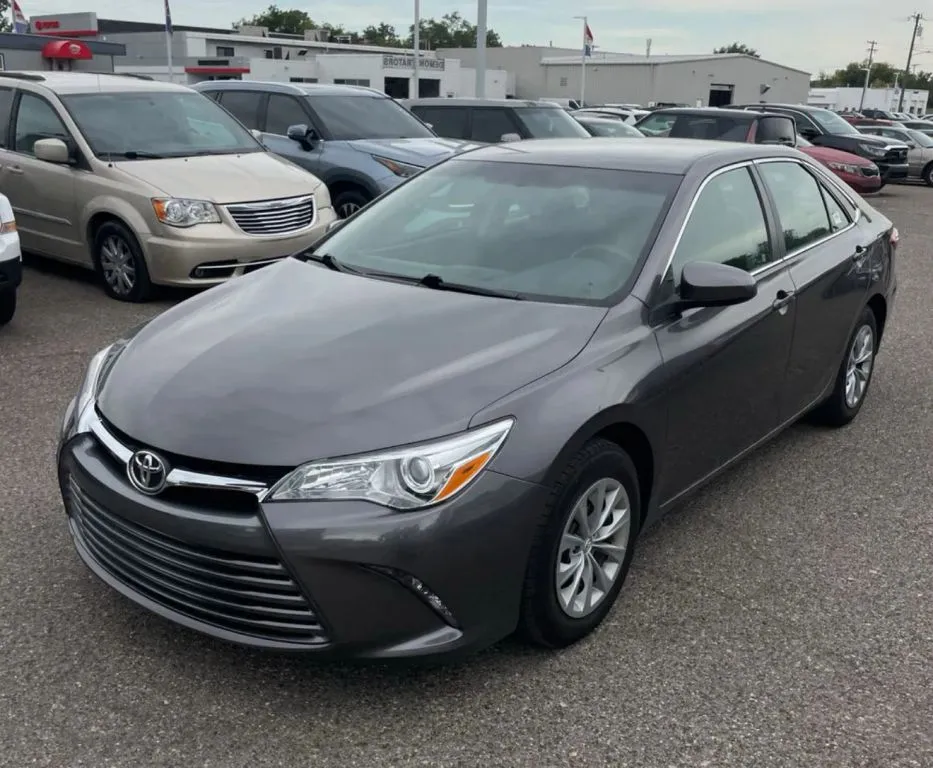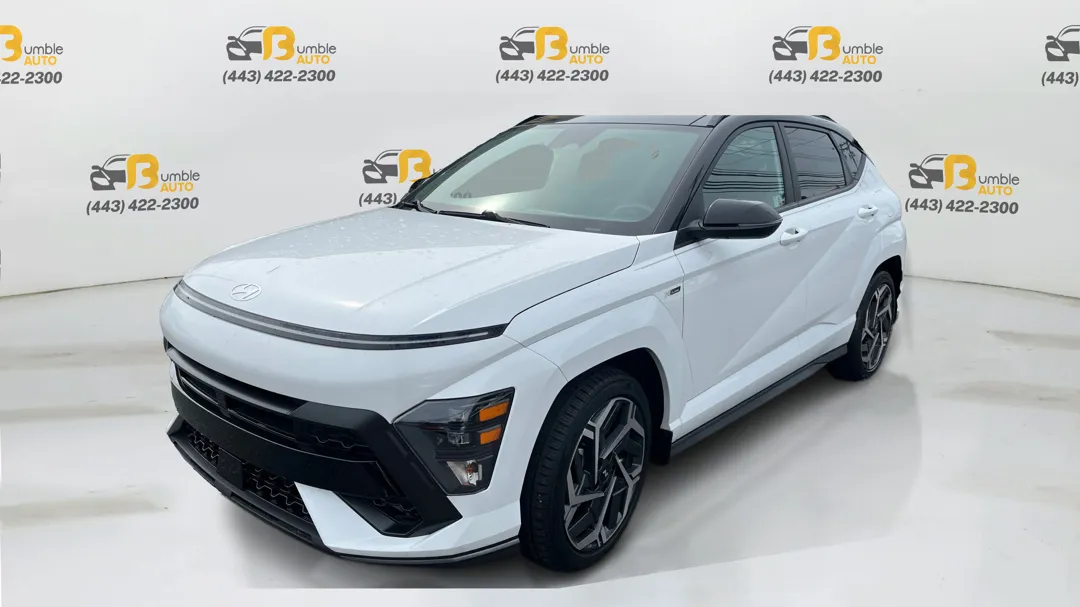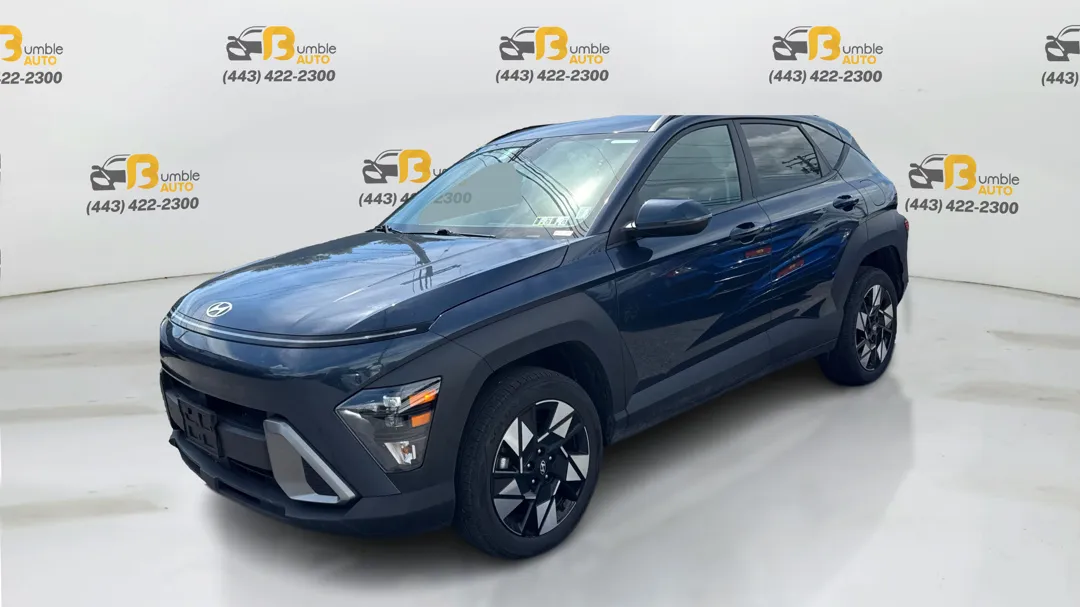Do's and Don'ts of Buying a Used Car: Insider Tips Dealers Won’t Tell You
Table of Contents
- Understanding the Used Car Market
- Do Your Research: Key Factors to Consider
- 1. Consider Your Needs and Vehicle Type
- 2. Understand Market Pricing
- 3. Review the Vehicle History Report
- The Importance of Setting a Budget
- Do's of Inspecting a Used Car
- 1. Start with a Thorough Exterior Check
- 2. Examine the Interior Condition
- 3. Check Under the Hood
- Don'ts When Negotiating the Price
- 1. Don’t Reveal Your Budget Too Soon
- 2. Don’t Rush the Deal
- 3. Don’t Ignore Negotiation Leverage
- Essential Documents and Paperwork for Buyers
- Do's for Test Driving a Used Car
- 1. Plan a Varied Test Route
- 2. Assess Comfort and Driving Experience
- 3. Inspect Again After Driving
- Don't Overlook the Vehicle History Report
- 1. Look for Signs of Major Accidents or Damage
- 2. Watch for Title Irregularities and Mileage Issues
- 3. Review Service Records and Maintenance History
- The Role of a Trusted Mechanic in Your Purchase
- Conclusion: Making an Informed Decision

Navigating the used car market can feel like navigating a maze filled with hidden traps and tempting deals. As a savvy buyer, you want to ensure that your investment is both wise and rewarding. This article delves into the essential do's and don'ts for smart buyers looking to master the art of acquiring a pre-owned vehicle. From understanding your budget and doing thorough research to knowing when to walk away from a deal, each tip you discover will empower you to make informed choices. Equip yourself with key insights that will not only save you money but also protect you from common pitfalls. Whether you're a first-time buyer or a seasoned pro, mastering these crucial strategies will help turn your car-buying journey into a success story. Let’s drive into the essentials of smart buying, ensuring that your next used car purchase is smooth and satisfying.
Understanding the Used Car Market

The used car market is a vast and diverse landscape, offering a wide range of vehicles from various brands, models, and years. Unlike the new car market, where vehicles are sold in pristine condition directly from manufacturers, the used car market encompasses cars that have been previously owned and driven. This diversity can be both a boon and a bane for potential buyers. On one hand, it provides a plethora of options to suit different needs and budgets. On the other hand, it necessitates a higher level of scrutiny and diligence to avoid falling into costly traps.
One of the key aspects of understanding the used car market is recognizing its cyclical nature. Prices and availability of used cars can fluctuate based on various factors such as economic conditions, fuel prices, and even seasonal trends. For instance, convertibles may be in higher demand and priced higher during the summer months, while four-wheel-drive vehicles might see a spike in winter. Being aware of these trends can help you time your purchase to get the best deal possible.
Additionally, the rise of online platforms and marketplaces has significantly changed the dynamics of the used car market. Websites and apps now allow buyers to browse vast inventories, compare prices, and even complete purchases without setting foot in a dealership. If you're exploring internet listings, be sure to follow best practices for safe online car buying to avoid scams and protect your personal information. However, this convenience comes with its own set of challenges, such as verifying the authenticity of listings and ensuring the reliability of sellers. Being well-versed in the digital landscape of the used car market is essential for making informed decisions and avoiding scams.
Do Your Research: Key Factors to Consider

Buying a used car is a significant investment, and doing your homework upfront can make the difference between a smart purchase and a costly mistake. By carefully considering key factors such as vehicle type, pricing, and history, you’ll be better equipped to choose a reliable car that suits your needs and budget.
1. Consider Your Needs and Vehicle Type
Start by identifying what kind of car fits your lifestyle. Think about how much space you need, your typical driving conditions, and preferences for features like fuel efficiency, safety ratings, or technology. For instance, a compact car might be perfect for city driving and commuting, while an SUV or pickup truck may be more practical for families or those needing extra cargo space. Reading online reviews and forum discussions can provide real-world insights into a vehicle’s strengths and common issues.
2. Understand Market Pricing
Once you’ve narrowed down a few models, take time to research their current market value. Websites like Kelley Blue Book and Edmunds offer tools that estimate what a fair price looks like based on the car’s age, condition, mileage, and your location. For additional insight into current market trends, check out a guide to 2025 used car prices to understand how depreciation and demand affect value. Knowing these figures gives you leverage when negotiating and helps you avoid overpaying. Keep in mind that prices can vary significantly between private sellers and dealerships, with dealers often charging more but sometimes offering certified pre-owned options with added warranties.
3. Review the Vehicle History Report
Before committing to any used car, always obtain a vehicle history report from reputable sources like Carfax or AutoCheck. These reports can uncover crucial details such as past accidents, title status, ownership history, and any discrepancies in reported mileage. A clean report can offer peace of mind, while red flags—like frequent repairs or salvage titles—may signal it’s time to walk away. This step is vital for avoiding hidden problems that could cost you more in the long run.
The Importance of Setting a Budget

Setting a budget is a foundational step in the used car buying process. It not only helps you narrow down your options but also prevents you from overspending. Start by assessing your financial situation, taking into account your savings, monthly income, and any existing debts. Determine how much you can comfortably allocate towards a down payment and monthly loan installments, if applicable. Financial experts recommend that your total car expenses, including insurance and maintenance, should not exceed 15% of your monthly income.
Once you have a clear budget in mind, stick to it. It's easy to get tempted by a flashy car with all the bells and whistles, but stretching your finances too thin can lead to long-term financial strain. Remember that the cost of owning a car goes beyond the purchase price. Factor in additional expenses such as insurance premiums, registration fees, taxes, and routine maintenance. Keeping these costs in mind will give you a more realistic picture of what you can afford. Among the biggest benefits of buying a used car is the ability to stay within your financial limits while still accessing quality vehicles.
When setting your budget, also consider the potential resale value of the car. Some makes and models depreciate faster than others, which can impact your financial position if you plan to sell the car in the future. Researching the depreciation trends of different vehicles can help you make a more informed decision. By setting a well-thought-out budget and adhering to it, you'll be better equipped to find a used car that meets your needs without compromising your financial stability.
Do's of Inspecting a Used Car

A careful inspection is one of the most important steps in the used car buying process. It helps you spot potential problems early and ensures you’re investing in a vehicle that’s both safe and reliable. By focusing on key areas during your inspection, you can uncover issues that may not be immediately obvious from a test drive alone.
1. Start with a Thorough Exterior Check
Begin your inspection by examining the car’s exterior for signs of wear or hidden damage. Look closely for rust spots, dents, scratches, or mismatched paint, which could indicate prior accidents or poor-quality repairs. Inspect the windows and mirrors for cracks or chips, and check the tires for even wear and adequate tread depth. Uneven wear could signal alignment issues or suspension problems. Don’t overlook the undercarriage—look underneath the vehicle for leaks, rust, or signs of impact that could suggest frame damage.
2. Examine the Interior Condition
Once inside the car, assess the condition of the upholstery, dashboard, headliner, and carpeting. Look for stains, tears, or unusual odors, which could point to past flooding, smoking, or pet use. Test all the interior electronics, including the infotainment system, air conditioning, power windows, and seat adjustments. Also, make sure the warning lights on the dashboard turn on briefly at startup and go off as expected—persistent warning lights may indicate deeper mechanical or electrical issues. A clean, well-maintained interior is often a sign of a responsible previous owner.
3. Check Under the Hood
Pop the hood and give the engine bay a detailed look. Check the levels and condition of essential fluids such as engine oil, transmission fluid, brake fluid, and coolant. Dirty or burnt-smelling fluids can be a red flag. Inspect belts and hoses for signs of cracking or wear, and look for any visible leaks or corrosion. Examine the battery for corrosion on the terminals and check for a recent replacement date if available. If you’re unsure what to look for or want extra peace of mind, it’s wise to bring along a trusted mechanic. Their trained eye can catch issues that a casual inspection might miss, potentially saving you thousands in repairs.
Don'ts When Negotiating the Price

Negotiating the price of a used car can be intimidating, but understanding what not to do is just as important as knowing the right moves. A misstep during negotiation can lead to overpaying or missing out on a better opportunity. By avoiding a few common mistakes, you’ll be in a stronger position to reach a fair deal.
1. Don’t Reveal Your Budget Too Soon
One of the most critical mistakes buyers make is disclosing their maximum budget too early in the conversation. Sharing this information upfront gives the seller an advantage, as they may anchor the negotiation around that number or offer less flexibility on pricing. Instead, let the seller present the initial price, then use your prior research to counter with a realistic and competitive offer. This keeps you in control of the negotiation and gives you more room to maneuver.
2. Don’t Rush the Deal
Eagerness can be costly when negotiating a used car price. Many buyers feel pressured to close the deal quickly, especially if they believe the vehicle might be sold to someone else. However, rushing can lead to overlooking red flags or accepting a less favorable price. Take your time to evaluate the offer carefully, consider all aspects of the vehicle's condition and history, and don’t hesitate to walk away if the deal doesn’t feel right. There are always other cars available, and your patience may lead to better opportunities. Consult our checklist of 12 things to do before buying a used car to make sure no important steps are missed during your buying journey.
3. Don’t Ignore Negotiation Leverage
Overlooking small but important details can limit your ability to negotiate effectively. If the car requires minor repairs, has worn tires, or shows cosmetic flaws, use these issues to justify a lower price. Additionally, check how long the vehicle has been listed for sale—if it’s been on the market for weeks or months, the seller may be more motivated to negotiate. Being observant and using these leverage points can help reduce the final price and ensure you’re not overpaying for overlooked imperfections.
Essential Documents and Paperwork for Buyers

When buying a used car, ensuring that all the necessary documents and paperwork are in order is crucial. The first document to check is the title, which proves ownership of the vehicle. Verify that the title is clear and free of any liens, which could indicate that the car is still under a loan. If the seller is a dealership, they should provide you with a bill of sale, which outlines the terms of the transaction and serves as a receipt.
Another essential document is the vehicle's registration. Ensure that the registration is current and matches the information on the title. If the car has been registered in multiple states, it may be worth investigating further to ensure there are no outstanding issues. Additionally, obtain a copy of the vehicle's history report, which can provide valuable information about its past, including any accidents, title issues, and service records. If you have questions about buying a used car, this is the perfect time to ask the seller or bring in a trusted expert before finalizing paperwork.
Lastly, if the car is still under warranty, make sure to obtain all relevant warranty documents. These can provide peace of mind and potential cost savings on future repairs. If the car is being sold "as-is," meaning without any warranties, be sure to get this in writing to avoid any misunderstandings. Having all the necessary documents in order will not only facilitate a smoother transaction but also protect you from potential legal and financial issues down the road.
Do's for Test Driving a Used Car

A test drive is one of the most important parts of the used car buying process. It allows you to experience the vehicle firsthand and uncover potential issues that may not be obvious from a visual inspection alone. A careful, well-planned test drive can help you assess the car’s performance, comfort, and reliability before making a final decision.
1. Plan a Varied Test Route
Start by selecting a test route that includes a combination of city streets, stop-and-go traffic, and highway driving. This allows you to evaluate how the car behaves under different conditions. Pay close attention to how the vehicle starts—listen for any strange noises that might indicate starter or engine problems. As you drive, assess the car’s acceleration, braking, and steering responsiveness. Any hesitation, pulling, or grinding sounds should be noted and questioned.
2. Assess Comfort and Driving Experience
Comfort and ergonomics are equally important during your test drive. Adjust the seat, mirrors, and steering wheel to ensure a proper driving position, and check that all controls are easily accessible. Take note of how the car handles rough roads, speed bumps, or potholes—these can reveal suspension or alignment problems. Listen for clunks, squeaks, or vibrations that could signal wear or damage in the suspension system.
3. Inspect Again After Driving
Once the test drive is complete, conduct a second quick inspection of the car. Check under the vehicle for any fresh fluid leaks and examine the tires for uneven wear, which can indicate alignment issues or suspension problems. If anything feels off during the drive or looks questionable afterward, don’t hesitate to bring it up with the seller. You may also want to follow up with a trusted mechanic for a professional opinion. Taking these steps ensures that you’re making a well-informed purchase decision.
Don't Overlook the Vehicle History Report

Before finalizing the purchase of a used car, reviewing the vehicle history report is a step you should never skip. This document offers a transparent look into the car’s background, helping you make a smarter, safer investment. It reveals crucial information that can’t always be detected through a visual inspection or test drive alone.
1. Look for Signs of Major Accidents or Damage
When going through the report, one of the first things to check is the car’s accident history. While minor scrapes or fender benders are common and may not affect performance, any record of major collisions should raise concerns. Structural damage from serious accidents can compromise the safety and reliability of the vehicle. Additionally, be cautious of vehicles with a salvage or rebuilt title, as they may have undergone extensive repairs that impact long-term value.
2. Watch for Title Irregularities and Mileage Issues
Pay attention to the title history for any signs of “title washing,” a tactic where sellers transfer the vehicle across states to hide previous salvage or flood designations. Title inconsistencies can be a strong indicator of past problems. Also, examine the mileage history closely. Sudden drops or gaps in mileage reporting could suggest odometer tampering—an illegal practice that misrepresents the vehicle’s actual usage and wear.
3. Review Service Records and Maintenance History
A reliable vehicle history report will often include details about previous maintenance and service appointments. Look for consistent records that show the car was regularly maintained—such as oil changes, brake servicing, and tire rotations. A well-documented service history indicates responsible ownership and can give you confidence that the car has been well cared for. Taking the time to thoroughly review the vehicle history report can help you avoid costly mistakes and make a more informed purchase.
The Role of a Trusted Mechanic in Your Purchase

A trusted mechanic can be an invaluable resource when buying a used car. Their expertise and experience can help identify potential issues that you might overlook during your inspection. Before finalizing your purchase, consider having the car inspected by a mechanic who can perform a thorough evaluation of its condition.
During the inspection, the mechanic will check for any signs of mechanical, electrical, or structural issues. They will assess the condition of the engine, transmission, suspension, brakes, and other critical components. If any issues are identified, the mechanic can provide an estimate of the repair costs, which can be used as a bargaining tool during negotiations or as a reason to walk away from the deal.
In addition to identifying potential problems, a mechanic can also provide valuable insights into the car's overall condition and maintenance history. They can advise you on the car's expected lifespan, common issues with the make and model, and any upcoming maintenance needs. By involving a trusted mechanic in your purchase, you can make a more informed decision and ensure that you're investing in a reliable and well-maintained vehicle. For added confidence and local expertise, visit Bumble Auto, your local used car dealer and speak with a team committed to transparency and value.
Conclusion: Making an Informed Decision
Navigating the used car market requires diligence, patience, and a strategic approach. By understanding the market dynamics, conducting thorough research, and setting a realistic budget, you can make more informed decisions and avoid common pitfalls. Inspecting the car, reviewing its history report, and involving a trusted mechanic can further enhance your confidence in the purchase.
Negotiating the price and ensuring that all necessary documents are in order are also critical steps in the process. By being well-prepared and strategic in your approach, you can secure a better deal and avoid potential legal and financial issues. Remember that patience and persistence are key, and don't be afraid to walk away from a deal if it doesn't meet your expectations.
Ultimately, the goal is to find a used car that meets your needs, fits within your budget, and provides reliable transportation for years to come. By mastering the essential do's and don'ts of the used car market, you can turn your car-buying journey into a success story and enjoy peace of mind with your purchase. These successful used car purchase tips will keep you focused, informed, and confident from start to finish.







